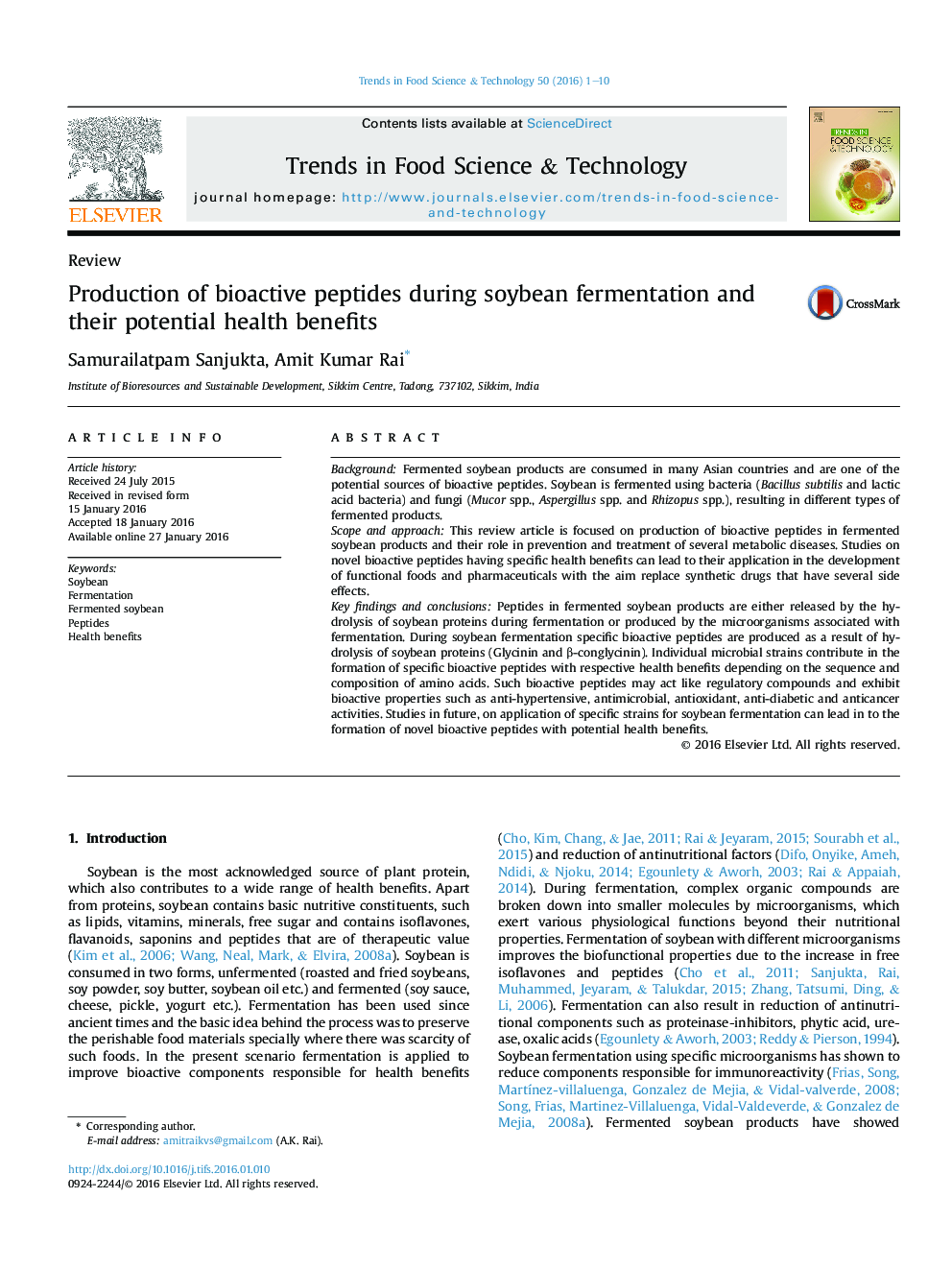| Article ID | Journal | Published Year | Pages | File Type |
|---|---|---|---|---|
| 2098446 | Trends in Food Science & Technology | 2016 | 10 Pages |
•Fermented soybean products are potential source of bioactive peptides.•Peptides are produced either by soybean protein hydrolysis or produced by microbes.•Individual microbes contribute to formation of specific bioactive peptides.•Peptides exhibit several health benefits depending on their amino acid sequence.
BackgroundFermented soybean products are consumed in many Asian countries and are one of the potential sources of bioactive peptides. Soybean is fermented using bacteria (Bacillus subtilis and lactic acid bacteria) and fungi (Mucor spp., Aspergillus spp. and Rhizopus spp.), resulting in different types of fermented products.Scope and approachThis review article is focused on production of bioactive peptides in fermented soybean products and their role in prevention and treatment of several metabolic diseases. Studies on novel bioactive peptides having specific health benefits can lead to their application in the development of functional foods and pharmaceuticals with the aim replace synthetic drugs that have several side effects.Key findings and conclusionsPeptides in fermented soybean products are either released by the hydrolysis of soybean proteins during fermentation or produced by the microorganisms associated with fermentation. During soybean fermentation specific bioactive peptides are produced as a result of hydrolysis of soybean proteins (Glycinin and β-conglycinin). Individual microbial strains contribute in the formation of specific bioactive peptides with respective health benefits depending on the sequence and composition of amino acids. Such bioactive peptides may act like regulatory compounds and exhibit bioactive properties such as anti-hypertensive, antimicrobial, antioxidant, anti-diabetic and anticancer activities. Studies in future, on application of specific strains for soybean fermentation can lead in to the formation of novel bioactive peptides with potential health benefits.
